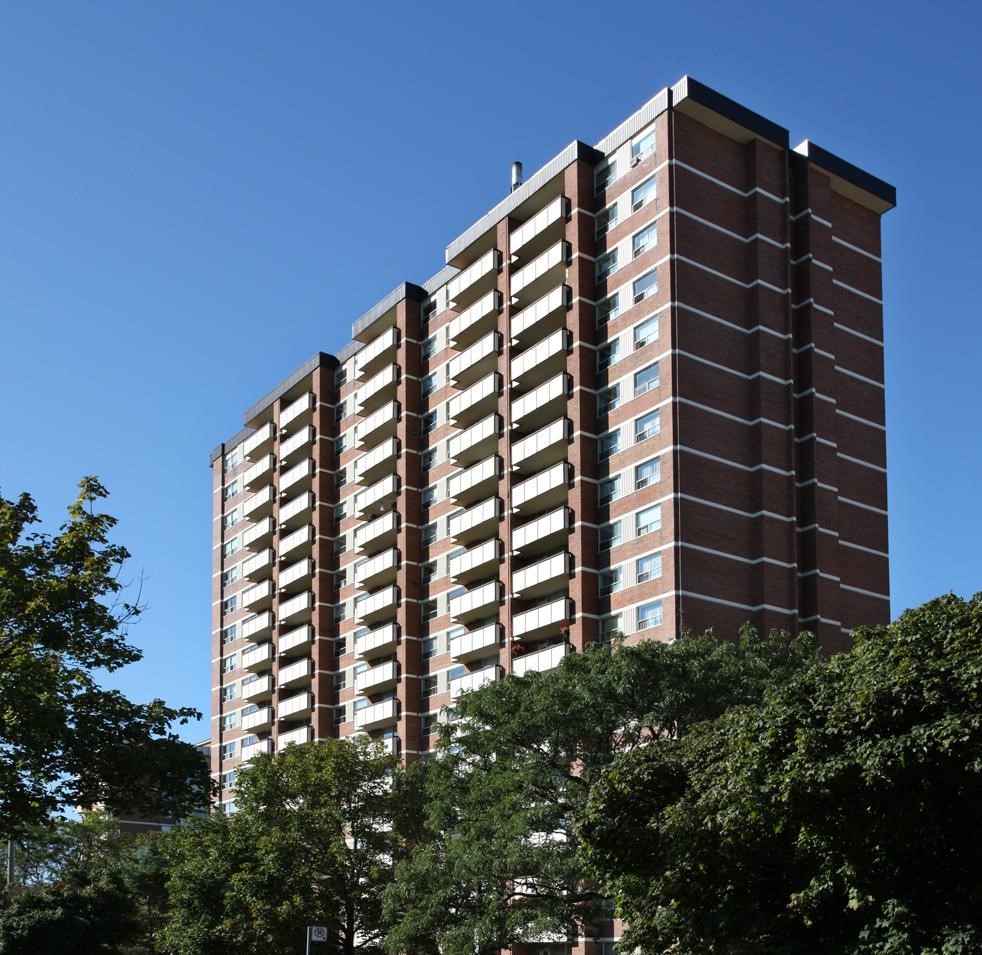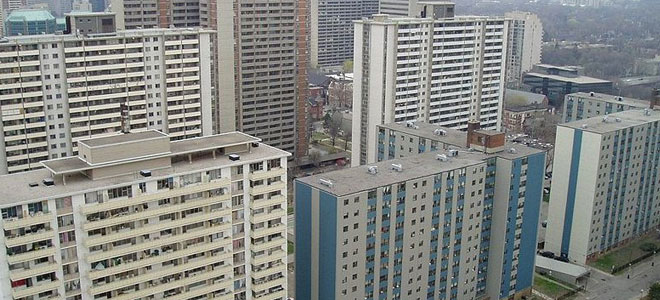Aging residential towers are the backbone of the rental stock in Canada. Peppered throughout our cities and suburbs, these mainstay buildings are home to hundreds of thousands of households with modest and low incomes, including a large portion of the frontline workers who’ve been disproportionately affected by COVID-19. In Toronto, over 500,000 residents currently occupy the 1,189 buildings commonly known as “towers-in-the-park.” These products of the 60s and 70s typically share the same physical attributes, like rectangular concrete frames, repeating balconies, and large open spaces that set them well back from the city’s sidewalks and roads.
Long before the 2020 pandemic reared its ugly head, concern was brewing over the lack of investment going into this essential affordable housing stock. A recent report by the Urban Land Institute points to high greenhouse gas emission footprints, low resilience, susceptibility to catastrophic system failures, poor housing quality, and an increasing concentration of “vertical poverty” as some of the major challenges facing building owners and the city alike.
Jim Heid, FASLA Founding Partner and chair of the Toronto Advisory Services, asserts that upgrades for Toronto’s aging slab towers have surpassed the critical point: “There were readily evident life safety risks created by the current state of many of the buildings. What the pandemic did was put another lens – health risks – on the urgent need for upgrades. As highly dense living environments with substandard ventilation and reliance on small elevators, the towers and many older multifamily properties risk losing property value as people see a new kind of risk that they might not have thought about before.”
Mission critical in a post-pandemic world
With lower-income residents making up a significant portion of the city’s frontline workers, the pandemic has underscored the need to drive investment in these “substandard” rental towers that so many families and vulnerable citizens call home.
“Building upgrades have always been mission critical,” says Brad Dockser, panelist at the Toronto ASP event and Chief Executive Officer and Co-founder at Green Generation in Bethesda, Maryland. “However, the pandemic has served as a catalyst for accelerating the focus on building upgrades and making buildings greener. Now there is a new bar. What owners should have already been doing is developing long-term energy plans to not only meet resident needs, but to drive strategic value from assets and create a compliance path for existing regulatory requirements.”
Having reached or exceeded the 35-year mark, it’s no surprise that a significant number of these towers are now plagued with serious problems. In addition to original heating systems and inefficient windows, many have no backup power — meaning key systems like heating, water, elevators, and lighting would not work in the event of a failure. Meanwhile, a whopping 94 per cent do not have central air conditioning, leading to potentially unhealthy indoor air temperatures throughout the summer months.
According to Heid, the main barrier preventing building owners from completing the necessary upgrades is the same reason regardless of property type: a short-term view of trying to minimize costs and maximize returns quickly versus looking long term at how an investment creates more value. But Heid also acknowledges that the problem cannot be solved by property managers and owners alone.
“There needs to be creativity at the regulatory level,” he says. “More assistance at the funding level and more pilot projects using social housing as a subsidized proving ground to test new systems and ideas, which can be adopted and brought to scale economically by the private sector.”
Furthermore, Dockser adds that while the vast majority of building owners understand the importance of making upgrades and having a comprehensive energy plan, they often don’t know where to begin. “It’s vital for owners to engage with strategic partners that have the technical expertise needed to turn a vision into an actionable plan in terms of timing, costs, technology, etc.,” he says. “Even though an on-site engineering team may have deep familiarity with the building, they may not have the insight into other aspects, like rebate programs or energy modeling. Comprehensive, end-to-end partners with deep knowledge and experience can help bring a global perspective to local projects and enable owners to plan for the long term.”
Getting the ball rolling
The first step toward revitalizing Canada’s aging residential towers is an understanding of the far-reaching benefits. For building owners, these include reduced regular maintenance, lower rate of tenant turnover, less risk of litigation and code violation, better quality tenants and the potential for premium pricing. Residents, meanwhile, benefit from improved comfort, safety and satisfaction, leading to a better quality of life. Communities and cities reap the rewards of superior housing stock that meets today’s bar.
Dockser advises residential building owners to engage with their teams and select strategic partners to help critically review their assets: “Trusted partners serve to help owners better understand how to develop the energy plan, including technology selection, energy modeling, financing, and communicating with stakeholders,” he says. “With Prime Minister Trudeau’s plans for achieving net-zero emissions in Canada by 2050, it’s critical that owners familiarize themselves with incentives at both national and provincial levels and understand the various capital market innovations and financing schemes available to them.”
“Audit, audit, audit,” adds Heid. “It’s hard to effectively evaluate what is needed, the potential return on investment, and the risk of loss in terms of both tenants and property value if you cannot see the entire picture. Evaluate energy systems, life safety matters, livability functions and risks presented to personal health. Rank the severity of the problem and look for creative solutions. Looking holistically can often lead to stacked benefits, where one change can resolve two or three issues at once. But if you don’t know all the issues you might not know how to optimize a specific investment to its highest return.”
 A broad vision needed to support tower renewal
A broad vision needed to support tower renewal
To build public support for the Tower Renewal Program and the political will to see it implemented aggressively, the mission and vision of these deep retrofits needs to be clear. They include:
• Creating a more resilient asset that will be safe and viable into the future;
• Improving the resident’s overall quality of life;
• Enhancing community resilience;
• Enhancing asset value over time while maintaining affordability;
• Reducing public expenses (e.g., health, emergency, temporary shelter, and fire); and
• Reducing social costs such as lost school days, workdays, and rising inequality.





